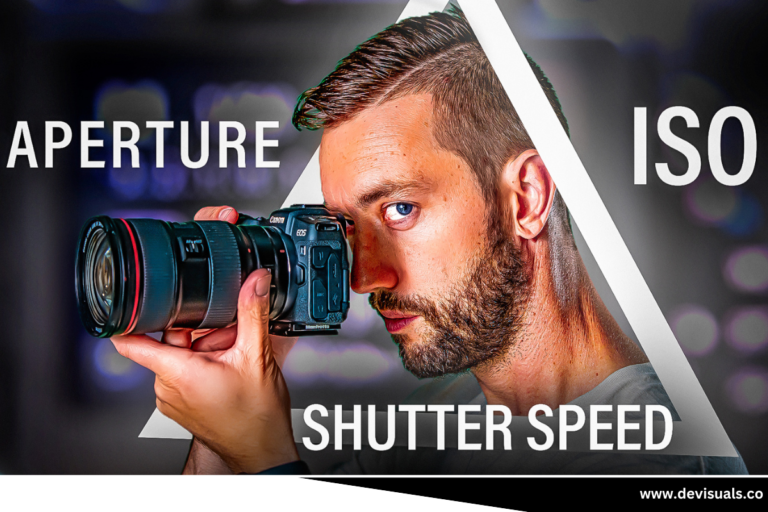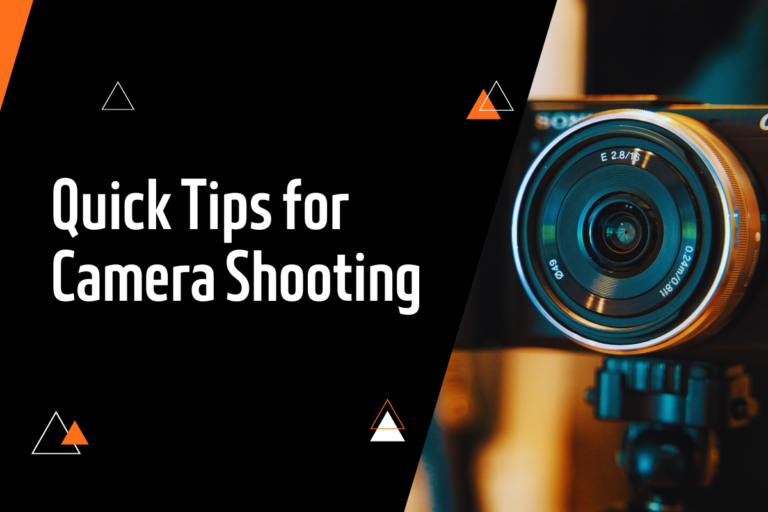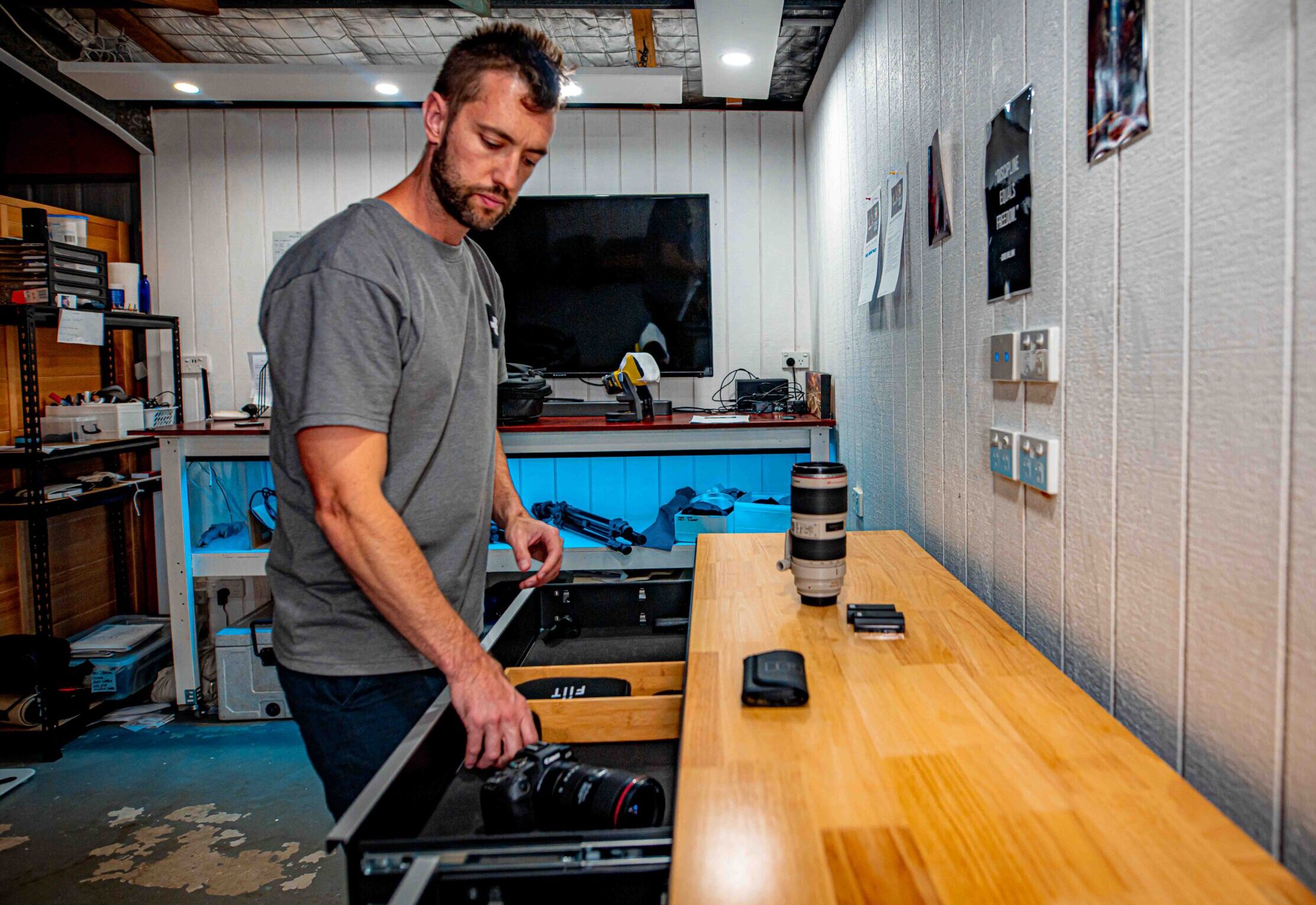Do you want to look more presentable during filming with the best film cameras? Let’s find out.
In the age of social media and selfies, a notion template is a valuable tool for beginners to stay organized from capturing the first ideas to writing your scripts and shot lists.
It is also very important to be presentable on camera to help you connect with your audience. Whether you’re taking a picture for Instagram or taking part in a virtual meeting, you always want to present yourself in the best possible light. Even with the quick development of technology, photographers and filmmakers still choose the traditional medium of film cameras. In this tutorial, we’ll examine how to make the most of the best film cameras available in 2024 to enhance your on-camera appearance.
Mind Your Lighting: Lighting is one of the most important factors in the best film cameras in 2024 and some exclusive characteristics of lighting are given below:
Adopt Dynamic Lighting Solutions: On-camera lighting will be more dynamic and adjustable than ever in 2024 thanks to advancements in LED technology and advanced lighting control systems. Make exact use of dynamic lighting options to create any mood or atmosphere you desire. The directionality, intensity, and color temperature of these solutions are all programmable.
Use Smart Lighting Controls:
Smart lighting control solutions have revolutionized on-camera lighting with their intuitive interfaces and smooth integration with other production equipment. Look into smart lighting controls. With features like app-based control, wireless connectivity, and programmable presets, these controls can enhance your creative versatility and expedite your workflow.
Accept Natural Light Enhancement:
You can enhance the natural light sources in your video to boost its visual quality, even when artificial lighting is necessary for on-camera settings. Purchase light-modifying accessories such as diffusers, scrims, and reflectors to control and fine-tune natural light, providing contrast, softness, and directionality where it is required.
Optimize Lighting for High-Resolution Capture:
With the best film camera resolutions expected to continue rising in 2024, it is imperative to optimize on-camera lighting for high-resolution capture. Because high-resolution cameras are harsh on imperfections like color casts, harsh shadows, and uneven illumination, pay attention to the consistency and quality of the lighting.
Maintain a Balance between Technical Accuracy and Creative Expression: While maintaining technical accuracy is necessary to get the greatest on-camera lighting, don’t undervalue uniqueness and artistic expression. Experiment with wilight angles, and attention-grabbing color schemes to create visually striking and memorable photos that draw in visitors.
Stay Up to Date with Emerging Lighting Trends:
Keeping current with the newest advancements in lighting trends and technology is essential for remaining competitive and relevant in the ever-evolving realm of visual media. Read trade publications, attend seminars and conferences, and connect with other industry professionals to stay up to date on the latest developments in on-camera lighting.
Advanced Lighting Techniques:
Thanks to advancements in lighting technology, there will be more sophisticated options available in 2024 for obtaining results that seem professional. Since you can change the color temperature and hue of RGBW LED lights to match your skin tone and create the perfect mood, they’re a good investment. To add more depth and dimension to your on-camera appearance, try backlighting, or use softbox diffusers to create a soft, diffused light that looks good and lessens sharp shadows.
Lenses
Lense is a must for the best film cameras in 2024. Lenses having an f/2.8 maximum aperture are commonly referred to as “fast” lenses because they let in more light than lenses with lower maximum apertures (higher f-stop values). The information below relates to lenses with an f/2.8 aperture:
Reduced Light Efficiency: Lenses with a maximum aperture of f/2.8 are great for low-light photography. With a bigger aperture and higher shutter speeds, you may reduce the ISO settings and minimize the possibility of motion blur and noise in your photos.
Reduced Depth of Field: A wider aperture also results in a reduced depth of field, which is advantageous for separating your subject from the background and producing the bokeh effect—a blurred background. Getting this feeling in portrait and close-up photography is desirable.
Versatility: Lenses with a maximum aperture of f/2.8 are excellent options for a variety of photographic tasks, including landscape, sports, action, event, and portrait photography. They offer a great balance between mobility and light-gathering ability.
Professional Use: Many professional photographers use f/2.8 lenses because they produce exceptional image quality even when stopped down somewhat from their widest aperture. They are often used for professional portrait, wedding, and event photography.
Cost and Size: Despite their outstanding performance, f/2.8 lenses are typically more expensive, larger, and heavier than lenses with smaller maximum apertures. However, their effectiveness and versatility often justify the price for committed photographers and videographers.
All things considered, If you want to do well in the best film cameras, f/2.8 maximum aperture lenses are well known for their ability to perform well in low light, produce stunning background blur, and be versatile enough to be used in a range of shooting situations.
Choose Your Angle:
Experiment with different camera angles and body positions to see which suits you the best. Use the unique qualities of the film cameras, such as manual focus and depth of field modification, to showcase your characteristics from various angles. Experiment with various odd angles to capture distinctive, lively photos.
In digital photography and cinematography, you can capture your subject or environment from a variety of angles. Here are some popular and unique angles:
Eye Level: This is the most common angle where the camera and the subject’s eyes are level. It’s an unbiased perspective that provides a grounded and understandable perspective.
High Angle: A subject may appear weaker, smaller, or more vulnerable when photographed from above. It’s beneficial for establishing authority or emphasizing the topic’s background.
Low Angle: Taking a picture of something from below may make it appear larger, more powerful, or more imposing. It effectively ups the drama and draws attention to how important the subject is.
Bird’s Eye View: Taken from directly overhead, this viewpoint provides a clear and comprehensive image of the topic. It’s commonly used to emphasize symmetry and patterns or to capture landscapes and architectural images.
Dutch Angle/Tilt: By tilting the camera, a diagonal horizon line is created, which can highlight tension, confusion, or an unsettling sensation in the image. Dramatic or avant-garde film and photography frequently use it.
Wide Angle: Using a wide-angle lens allows you to see the scene from a broader viewpoint. It’s useful for capturing architecture and landscapes, as well as an impression of vastness or space.
Near-Up: Using a tight frame and getting up close to the subject helps highlight details and expressions. It’s widely used for portraits, macro photography, and capturing little objects or textures.
Over-the-Shoulder: This shot, which is commonly used in films, shows a character’s point of view and frames the subject in front by positioning the camera over their shoulder.
Point-of-View (POV): This style of presentation mimics the viewpoint of the subject, creating the illusion that the viewer is observing the circumstances from their perspective. It’s commonly used in first-person narratives, action sports, and immersive storytelling.
Canted Angle: This is a scaled-down variation of the Dutch angle that also necessitates camera tilting. Without overwhelming the viewer, it can provide more vibrancy and aesthetic appeal to the image.
These are but a handful of the numerous perspectives available to you in digital photography and cinematography. You may improve your visual storytelling by utilizing the various perspectives that each angle offers originally.
Ensure Proper Posture:
When you’re on camera, adopting a good posture not only enhances your appearance but also conveys professionalism and assurance. Keep your shoulders down, stand up straight, and avoid slouching or leaning too far to the front or back. By 2024, people will have access to wearable posture correction devices with haptic feedback and AI support as tools to help them gradually improve their posture. Use these techniques with the best film cameras as part of your routine to enhance your on-camera presence.
What to Wear:
Pay attention to the fabrics and textures that can enhance the depth and attractiveness of your ensemble. Consider the color palette of the surroundings and dress in a way that either complements or contrasts with the surroundings. Accessories are a great way to add personality to your look, but avoid using anything too garish or distracting in front of the camera.
Relax and Smile
Relax, have a laugh, and smile. Since film cameras are great at capturing fleeting moments of emotion, allow yourself to be fully present and expressive during the entire shoot.
Mind Your Background:
Your background sets the stage for your on-camera performance. Choose a background that blends in with your content, isn’t overly distracting, and is uncluttered. For the best film cameras In 2024, the use of virtual backgrounds that facilitate augmented reality (AR) has increased. Consider utilizing augmented reality backgrounds that convey your personality or area of expertise while maintaining a professional image. Just be mindful of any possible glitches or disruptions when using virtual backgrounds.
Consider Your Grooming and Makeup Look:
Select techniques for both that highlight your inherent beauty without looking overdone or gaudy. Keep in mind that film cameras catch details with remarkable clarity, so focus on achieving a polished yet natural look. Take into account the overall aesthetic of the session and adjust your cosmetics and grooming accordingly to achieve cohesion.
Relax and Be Yourself:
Recognize that your quirks and imperfections are what make you unique and authentic while you’re on camera. Trust that film cameras will capture the essence of the event, allowing you to relax and be genuine without feeling uncomfortable. Remember that genuine emotion and spontaneity can elicit greater interest than contrived or planned poses.
Practice Posing:
With your photographer or filmmaker’s assistance, try out several poses and gestures that most accurately capture your unique personality and sense of style. Look for poses that inspire you in fashion magazines, celebrity images, or even old-school film stills. Incorporate objects or elements of your surroundings into your poses to add visual interest and intensity.
Try Different Film Types:
Create a range of aesthetics and looks by utilizing the assortment of available film stocks. Try varying the grain size, color profile, and film speed to get the appearance you want for your photos or movies. Don’t be afraid to blend several movie genres to create unique and unexpected blends that will set your work apart.
Develop Your Nonverbal Communication Skills:
Your nonverbal clues have a big impact on how you seem on video. Be aware of your gestures, eye contact, and facial emotions to convey sincerity and engagement. Developments in virtual reality (VR) and augmented reality (AR) technologies will make more immersive communication experiences possible by 2024. To make
your on-camera presence more interactive, try using AR filters or virtual reality avatars to enhance your gestures and facial expressions.
Put on Success-Oriented Clothing:
The things you wear can have a big impact on how you look on camera. By 2024, fashion trends might have altered, but the principles of successful dressing are timeless. Select clothing that fits well and highlights your body type; avoid gaudy accessories and busy patterns that could draw attention away from the screen. Consider the color contrast between your clothing and the background to ensure that you stand out without overpowering your surroundings.
Engage in Active Listening:
Active listening is essential for effective communication when on camera, whether you’re making a video or participating in a virtual meeting. Observe intently what others are saying, showing your interest by nodding and responding appropriately. Real-time transcription and translation systems will be extensively utilized by 2024, improving accessibility for a variety of users and facilitating seamless cross-linguistic communication. Utilize these tools to ensure that your message is understood by audiences worldwide.
Innovative Background Options:
Although it’s normally best to have a simple, uncluttered background, you can be creative with your backdrop to improve your on-camera appearance. In 2024, green screen and virtual set technology will be more widely available, enabling you to build a branded backdrop specifically for your content or transport yourself to any location. Look through simulated studio sets or create unique backgrounds that showcase your individuality and sense of style while keeping a polished appearance.
Enhanced Communication Proficiency:
In addition to spoken interaction, effective communication also takes into account tone, cadence, and emotional clarity. 2024 will see significant advancements in speech synthesis and voice modulation technologies, making it possible to provide more realistic-sounding voice synthesis and real-time vocal coaching. Make use of these tools to polish your vocal performance and enhance your on-camera communication. Practice your concise and clear speech. By using pauses and tone of voice, you may draw attention to key points and maintain the audience’s interest.
Embrace Authenticity:
When speaking on camera, it’s important to be sincere to maintain viewer interest. In your speech, be sincere, truthful, and committed to your identity. Deepfake technology still presents ethical questions about manipulation and deceit online, even in 2024. Adhere to your beliefs and refrain from employing dishonest tactics that erode your audience’s confidence. Rather, concentrate on having sincere interactions to create true connections.
Body Language Mastery:
Refining your body language is essential for conveying confidence and charisma on camera. In 2024, augmented reality (AR) and virtual reality (VR) technologies offer new opportunities for enhancing your body language through digital avatars and gestures. Experiment with AR filters that animate your expressions or VR environments that simulate real-world interactions, allowing you to practice and refine your body language in a virtual space before going on camera.
Continuous Learning and Modification:
Staying ahead of the constantly evolving digital scene requires a commitment to lifelong learning and flexibility. Maintaining current with emerging technology, social media trends, and industry best practices will help you improve your on-camera skills and remain relevant in a dynamic environment. Embrace innovation and experimentation in 2024 and beyond, and don’t be afraid to step outside of your comfort zone to try out new strategies and techniques for enhancing your on-camera presence.
Current Style:
Classic fashion concepts will remain important in 2024, despite shifting trends in the fashion world. Try new styles, but stay with classic colors and forms that complement your skin tone. In addition to clothing, pay attention to grooming and accessories to complete your on-camera look. Invest in high-quality skincare products and grooming tools to ensure a polished look. Next, find striking pieces that complement your overall style without competing with it when selecting your accessories.
Developing Connections:
Sincerity is essential in 2024, and you must have a genuine connection with your audience. Share personal anecdotes, insights, and experiences to build rapport with viewers and personalize your on-camera image. Use interactive features to engage your audience directly and create a sense of community around your material, such as polls, live chat, and Q&A sessions. Authenticity and relatability will be crucial elements of successful on-camera communication in 2024 and beyond.
The best film cameras of 2024 will make you appear your best on camera and make a lasting impact on your audience if you pay attention to the lighting, background, attire, posture, nonverbal cues, and sincerity of the cameras. Try out new technologies and tactics often to stay ahead of the curve and enhance your on-camera image in the ever-evolving digital landscape.
Remember that your strongest covert weapon is confidence. Take a deep breath, embrace your unique beauty, and use the lens to share your story!








